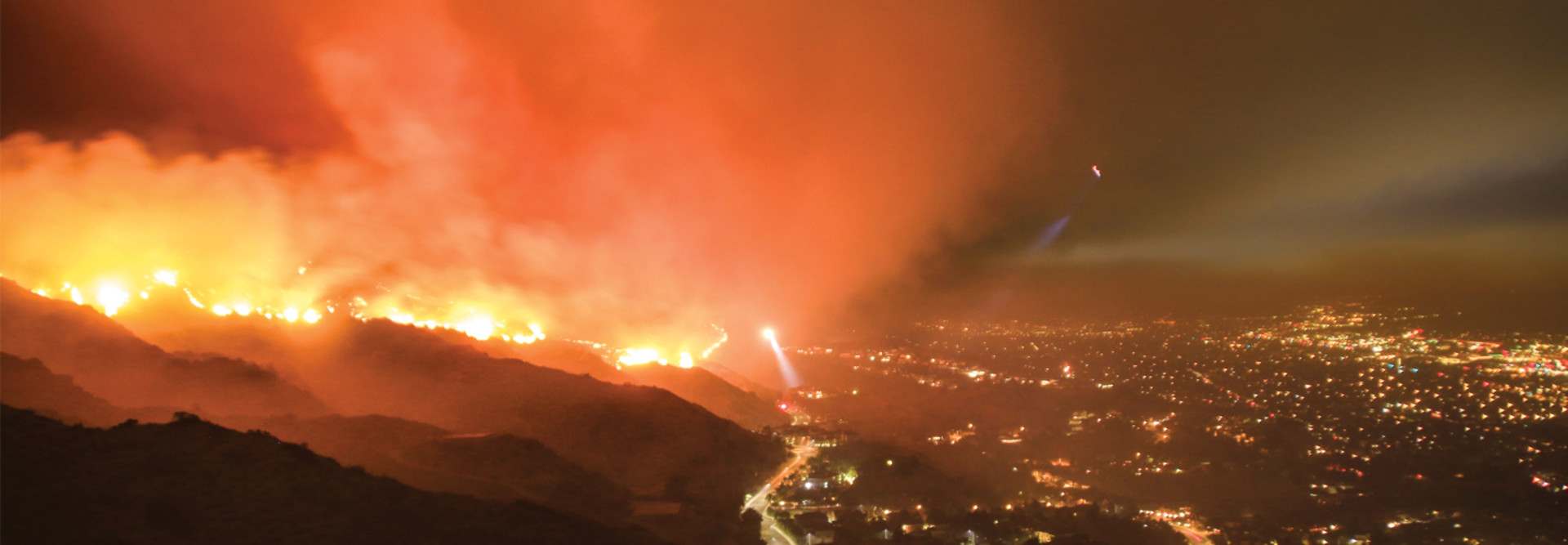AI, Data Analysis Improve Situational Awareness
One of the challenges that firefighters constantly face is gaining enough situational awareness to effectively combat fires. This is especially true for large, complex and unpredictable wildfires.
Recent advances in AI and data analytics are improving situational awareness for firefighters. Rick Stratton, a fire analyst at the U.S. Forest Service, tells the Thomson Reuters Foundation that researchers have been able to create AI models that provide new layers of data that build on the institutional knowledge of local firefighters.
“Firefighters only see so much, their careers are short — but now we can model thousands of artificial seasons and pull all sorts of insights,” Stratton says. He operates an online dashboard that allows fire departments to get analytics of their terrain in real time.
“We wouldn’t have been able to do that 15 years ago,” he says. “We didn’t have the computer power.”
One AI-based tool, known as the Potential Control Locations algorithm, “uses machine learning to suggest where firefighters should place their control lines during a blaze,” as the Thomson Reuters article explains.
“It’s very data hungry,” Chris Dunn, an Oregon State University forestry researcher, says. “It takes into account distances from roads, where there are ridges and flat ground, what kind of fuel is present on the ground, and it samples historical fire perimeters too.”
Other researchers are also bringing AI to bear to help fight fires. Andre Coleman, who is leading a team of researchers at the Pacific Northwest National Laboratory, worked with the Department of Homeland Security to create a system in 2014 called Rapid Analytics for Disaster Response, or RADR, as NBC News reports.
RADR “uses image-capturing technology from satellites, aircraft, drones, artificial intelligence and cloud computing to assess the impact of natural disasters, including wildfires,” NBC notes.
Instead of waiting for satellites to transmit images, which can take hours, a fire-focused version of the tool can “reveal wildfire boundaries multiple times a day and link impact and risk to structures, substations and other critical infrastructure in the landscape,” according to NBC.
Combining technologies to provide real-time situational awareness is critical to containing wildfires. Any tool that can cut down response times and improve and hasten decision-making is of vital importance during a fast-moving situation such as a fire.
“Coordination can be challenging,” Coleman says. “This can help with evacuation routes to help understand where search and rescue needs to go.”
That brings home that AI and data analytics tools are not an abstract concept when it comes to firefighting. They can help save lives.
RELATED: How can deployable operations centers aid in disaster response?
Drones Can Enhance Safety and Firefighting Response
Drone technology is also evolving to help firefighters combat both wildfires and structural fires in urban environments.
For example, as The Hill reports, Carrick Detweiler, CEO of Drone Amplified and a professor at the University of Nebraska–Lincoln, has developed a drone technology that drops balls of chemicals to create targeted fires at night. The system “allows firefighters for the Forest Service and Bureau of Land Management to fly at night and in heavy smoke using thermal imagery.”
“In 2020, the Forest Service and Bureau of Land Management deployed our system on almost all of the major wildfires that we saw in California, Colorado, and Oregon,” Detweiler says. “In fact, they dropped over 200,000 of these ignition spheres with our system. Right now only a small number of firefighters have trained to use this technology. In the coming years we hope there will be one of our systems with every firefighting team out fighting these wildfires to help save lives.”
Thermal imaging can also help battle fires closer to where people live. A prototype autonomous drone called the Prophet, developed by Marius Kindler at the Umeå Institute of Design, can monitor and assess structures on fire so that fire departments and other emergency responders can react effectively.
The drone is equipped with a FLIR camera to capture a heat map, helping rescuers detect the source of fire and how hot portions of a structure are. The drone can also help predict anomalies and can be linked with other drones to share situational awareness.
Technology will never replace a firefighter’s intuition or skill. However, technology is increasingly becoming a core part of how firefighters perform their missions and save lives, in wildfires and out of them.
This article is part of StateTech’s CITizen blog series. Please join the discussion on Twitter by using the #StateLocalIT hashtag.












